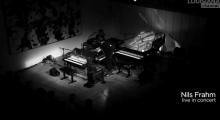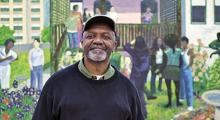People
Video Type
“When you glorify violence, then it comes back to bite you.” In this short video, writer James McBride reflects on the riots in the city of Ferguson and America’s refusal to take a long critical look at itself.
There’s a class war going on in America, and blacks are still involved in a large part of that, as “the majority of blacks still have not enjoyed the fruits of great commercial or life success”, says James McBride. Even though the situation is not as bad as it was thirty years ago, it’s still a problem: “Every once in a while it rubs in a way that is very embarrassing for us as Americans.”
Observing the tense situation in the city of Ferguson, where massive protests arose when an unarmed black teenager was shot and killed by a white police officer, who was subsequently not indicted, McBride claims that you can’t simply blame the police: “It’s not really a police problem – its’ a society problem”, he argues. “Beneath the uniform, there’s a man, who wants to go home to his wife and children”, he continues, commenting on what happens when you put a lot of poor people in one place and then tell the police to take care of them. According to James McBride, you need to turn the mirror and look at America’s idea of policing, with cops who are heavily armed, and the general accessibility of firearms: “This is what happens, when you allow guns to be rampant.”
James McBride (b. 1957) is an American writer and musician. His bestselling book ‘The Color of Water’ (1995) was on The New York Times’ Bestseller List for more than two years and has since become an American classic. McBride’s novel ‘The Good Lord Bird’, was the winner of the 2013 National Book Award for Fiction.
James McBride was interviewed by Martin Krasnik at the Louisiana Literature festival, August 2014, at the Louisiana Museum of Modern Art, Denmark.
Camera: Nikolaj Jungersen
Edited by: Kamilla Bruus
Produced by: Christian Lund
Copyright: Louisiana Channel, Louisiana Museum of Modern Art, 2014
Supported by Nordea-fonden
Comments
Brought to you by LOUISIANA






